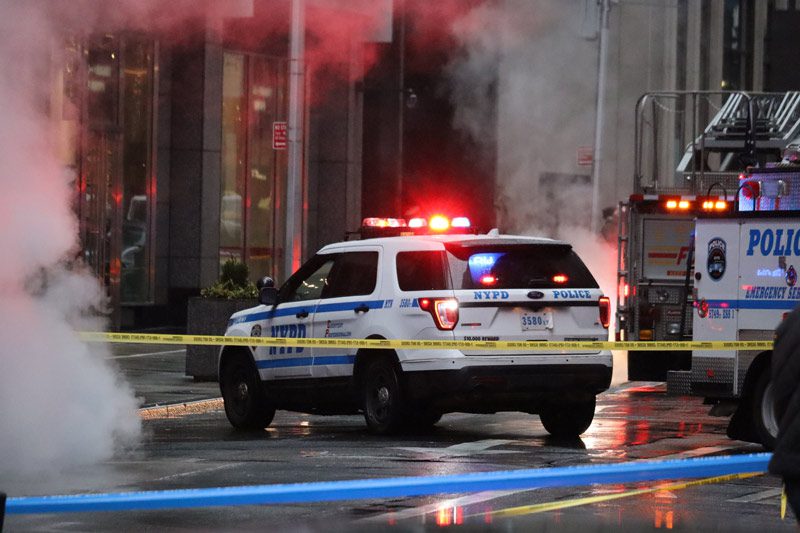Many people may have heard of PTSD, but few understand it. There is a lot of information about it, but this is sorely lacking from the human standpoint. We often associate PTSD with flashbacks or aggression. However, many people are unaware of the complex emotions and feelings of shame and inadequacy that torment those who suffer from it.
In this article, I will provide an overview of various techniques that could help individuals with PTSD with how they handle their daily struggle with the feelings, emotions, and things they suffer. They are the techniques I use to cope.
Clinically post-traumatic stress disorder (PTSD) is a psychological disorder caused by actual or threatened death, severe injury, sexual violence, or highly traumatic experiences. The trauma of these experiences manifests through various symptoms. Those of us tormented by these symptoms know they can come out of nowhere and hit us like a brick.
The things I found that helped me cope with all the craziness of PTSD are divided into three parts: 1) Prevention as long as it is possible, 2) During the attacks or episodes, and 3) The aftermath.
Part 1: Prevention
My way of coping with PTSD is keeping my mind occupied with a ton of other stuff. I exercise regularly. Some sports you can do alone if that’s your comfort. Swimming is something you can do alone or with a bunch of others, or even walking. Most of the time, I accompany these activities with music I know and like. If I’m humming the tunes in my head, there’s no place for the bad stuff.
I focus on things requiring my full concentration. In my case, it’s writing. This requires my complete attention, and just in case, I accompany it with more music. Besides all that, I still try to steer clear of the triggers I discovered in Part 3 of coping with the craziness (“The aftermath”).
Also, breathing exercises can help prevent attacks by focusing on your breath and calming yourself down. My breathing exercise is actually from a movie. I can’t remember which one, but it starts with 4 seconds in and 4 seconds out, then 6 seconds, and finally 8 seconds. Once you can do the 8 seconds in and 8 seconds out comfortably, you’ll be much calmer. I often use this before going to sleep.
The final prevention technique is critical—finding support wherever you are, whether you frequent the gym or swimming pool. Also your family and friends—make sure someone knows what is happening to you when you’re calm. Perhaps even let them know how they should help you or whether to leave you alone. Who can they call if things get really bad? They don’t have to know everything, but people generally want to help, and this is a way for them to do that.
To sum it up:
- Exercise, walk, swim, or do anything that keeps you busy, motivated, and moving
- Find something that requires your full concentration and is enjoyable
- Steer clear of the triggers
- Breathing exercise (whichever one you like, as long as it calms you)
- Find and use support in the places you frequent
Part 2: During the attacks or episodes
Even with all of the above, the craziness still hits us. We can prepare, breathe and exercise however we like. But sometimes, and often out of nowhere, we’re still struck! Most of the time, it just happens too fast to do anything about it. But sometimes, we get a feeling like it just isn’t right. For me, that was one of the things I discovered in Part 3. If I get that feeling, I need to get out of that environment—find somewhere quiet to calm down if I still can, often through the breathing exercises.
Somewhere quiet is a must for me, but it doesn’t have to be for you. The less stimulation I have around me, the better I can control myself.
The support group mentioned in Part 1 (“Prevention”) comes into play here. If you can open up and let a few people know what is going on, they will be able to support you. In my case, they kept other people at bay. Some people only wanted to help by asking what was wrong, offering water and the like, but they only made it worse by crowding me when I just needed space and less stimulation. By having people there who know what’s wrong, you’re actually helping yourself.
To sum it up:
- Take action if you get “that feeling.” Don’t go through with it because you think you have to.
- Find an environment that helps you manage, whether it’s a quiet and solitary place or a place filled with family or people. Whatever you need to stay in control
- Use the support you created in Part 1. By having people know what to do and especially what not to do!
Part 3: The Aftermath
After you have had an attack or episode, try to talk to the people who were there. Explain to them what triggered it—what it did to you and how it affected you. You don’t have to go into details, but the lack of understanding is what often causes friction. Perhaps they can even help you avoid the things that triggered it in the first place.
Remember, you are not alone, despite what you might feel because of your illness. Next comes the reflection—finding out what happened that triggered your anxiety, flashbacks, or emotions. Once you find that out, you can perhaps look for a feeling that accompanied it. Maybe when you feel this in the future, you can avoid the situation entirely by leaving or using some of the techniques in Part 1 to cope and breathe it out. All this means learning more about yourself and your disease and finding ways to cope with your daily life until you get everything under control.
To sum it up:
- Talk about it with the people involved. Help them understand so they can help you in the future. Build that support.
- Think back, try to find the triggers, and look for the accompanying feelings, so you can use those to prevent some of the attacks or episodes
- Learn, learn, and learn some more—about yourself, your body, and your emotions
One thing I learned is that even with treatment, you will probably carry this burden for the rest of your life. You can probably get it under control, but whether you like it or not, it’s a part of you. So you better learn as much as you can.
If you or someone you know experiences mental health issues, it is important to seek help from a qualified professional. Our Resource Specialist can help you find expert mental health resources to recover in your community. Contact us now for more information on this free service to our users.
About the Author, Kevin van den Brandt, a 10-year veteran police officer: In my work, I encountered some things no human being should ever have to see, and it has shaped me into who I am today. I do my job proudly, but no one could have prepared me for this rollercoaster of a ride to which it led me. Read all about my journey with PTSD on my blog “Going Crazy.”
rtor.org and Our Sponsor Laurel House, Inc. Celebrate Pride in June
On June 28, 1969, New York City police raided the Stonewall Inn, a gay nightclub in Greenwich Village, sparking a riot and six days of protests. This incident, known as the Stonewall Uprising, marks a turning point in the gay rights movement, now celebrated as Pride Month in June.
This Pride Month, www.rtor.org and Laurel House affirm their commitment to supporting members of the LGBTQ+ community in their quest for equity and justice, especially in their fight for accessible, safe health and mental health care.
www.rtor.org and Laurel House are committed to the advancement of racial equity and social justice, and to making mental health services available to all.
Photo by Campbell Jensen on Unsplash
The opinions and views expressed in any guest blog post do not necessarily reflect those of www.rtor.org or its sponsor, Laurel House, Inc. The author and www.rtor.org have no affiliations with any products or services mentioned in the article or linked to therein. Guest Authors may have affiliations to products mentioned or linked to in their author bios.
Recommended for You
- Reclaiming Your Future: Effective Strategies for Addiction Recovery - March 26, 2025
- Coping With Social Anxiety In School: Strategies For Success - March 24, 2025
- Overcoming Trauma and Living with Depression: A Journey of Healing - March 20, 2025





